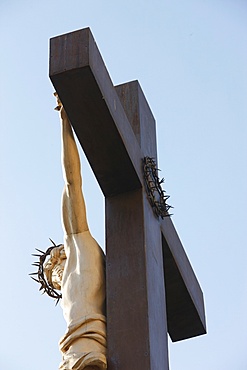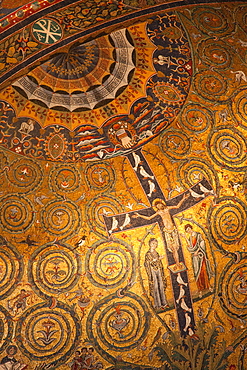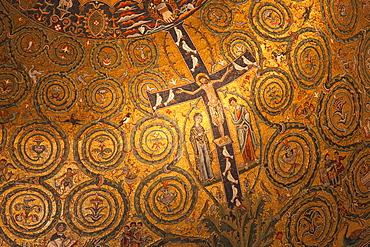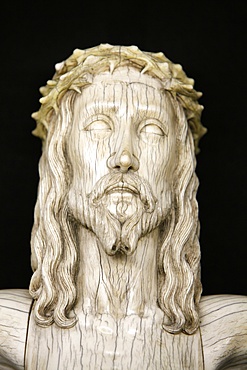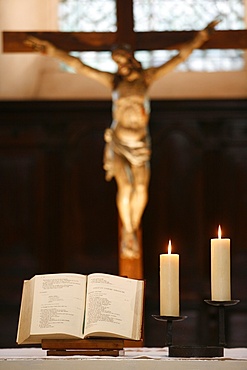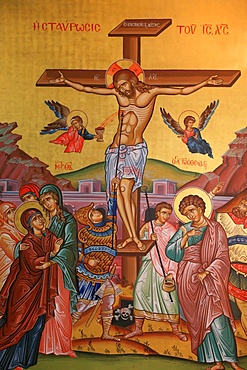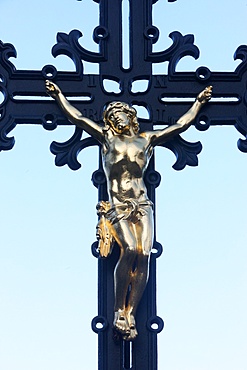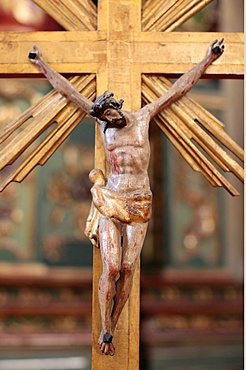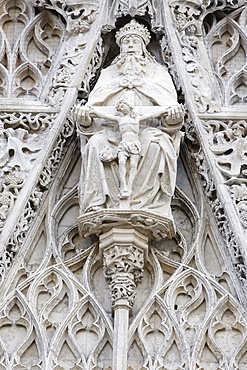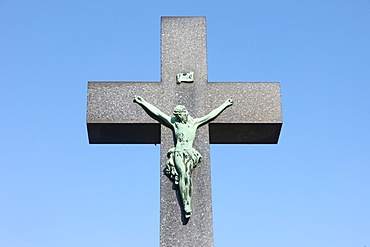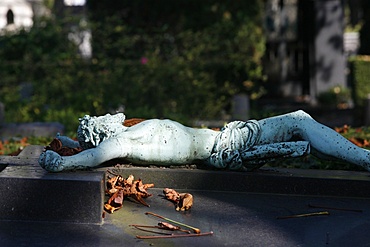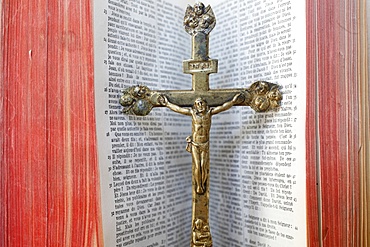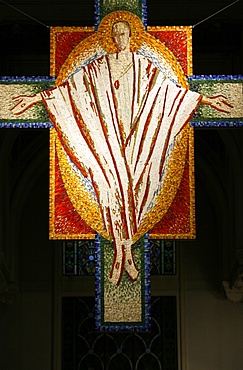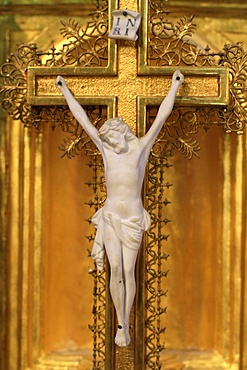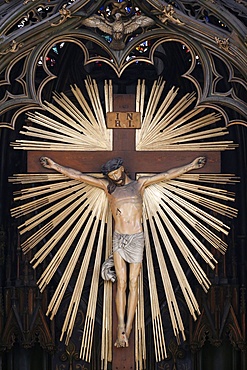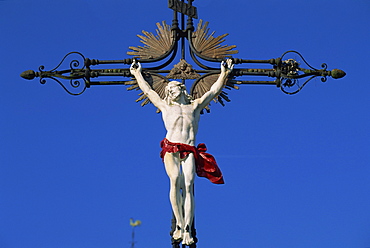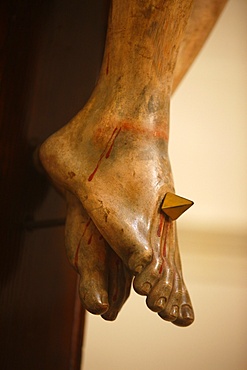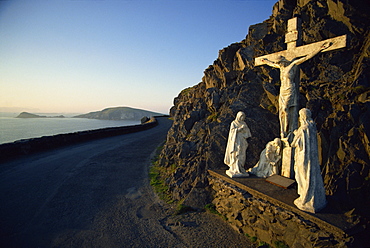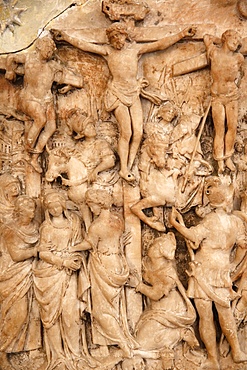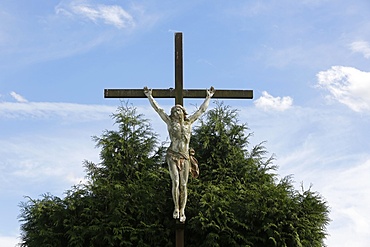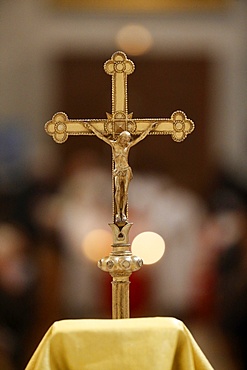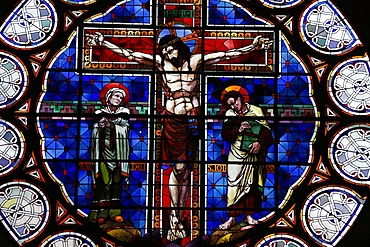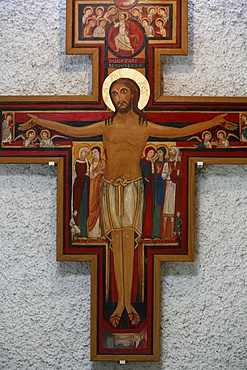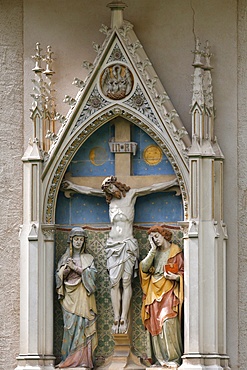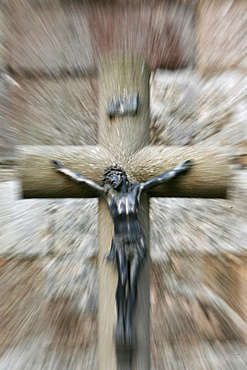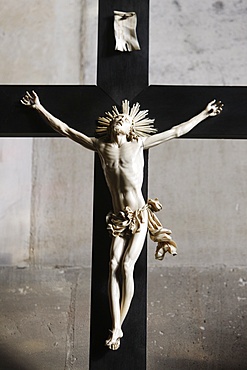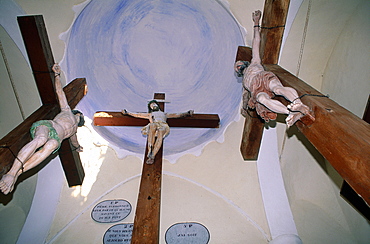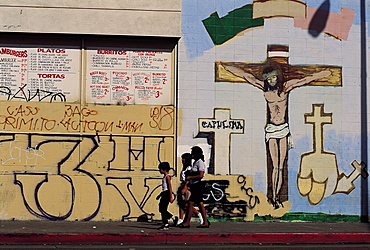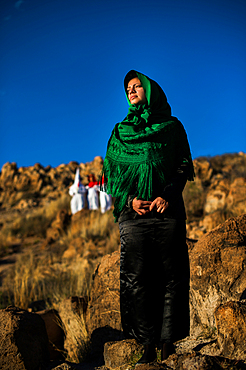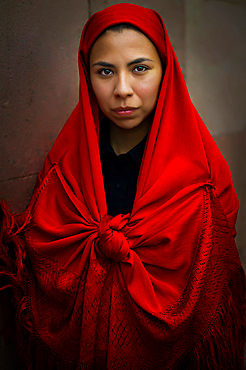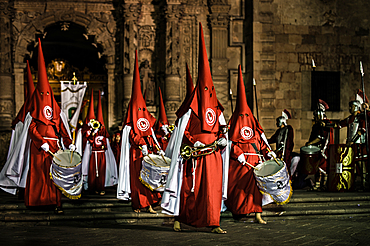Results
75 results found
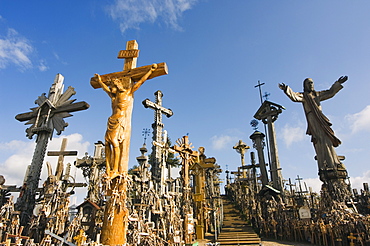
Hill of Crosses (Kryziu Kalnas), thousands of memorial crosses, a tradition of planting crosses since the 14th century, Lithuania, Baltic States, Europe
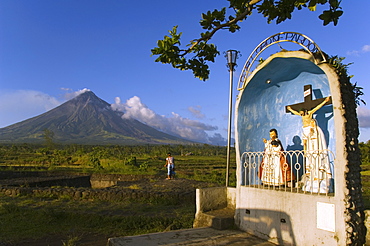
Volcanic cone with plume of smoke of Mount Mayon, 2462m, and grotto or wayside shrine, Bicol Province, Luzon Island, Philippines, Southeast Asia, Asia
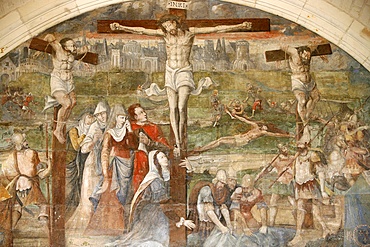
Painting by Thomas Pot around 1563 of the Resurrection, Chapter House, Fontevraud Abbey, Fontevraud, Maine-et-Loire, France
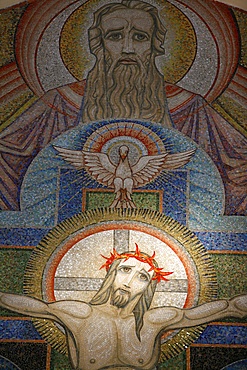
Mosaic by Antoine Molkenboer showing God, the Holy Spirit and Jesus, Annecy, Haute Savoie, France, Europe
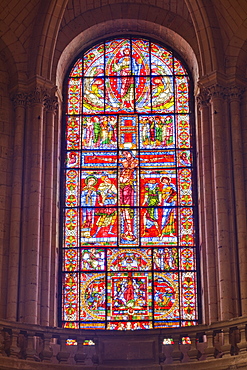
The famous stained glass window of the Crucifixion of Christ in Poitiers cathedral, Vienne, Poitou-Charentes, France, Europe

Detail of a Crucifixion sculpture in Notre-Dame de Paris cathedral Treasure Museum, Paris, France, Europe

Frescoes, Resurrection of Christ Gate Church, Kremlin, Rostov Veliky, Golden Ring, Yarsolavl Oblast, Russia, Europe
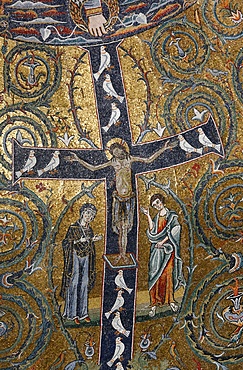
A 12th century fresco of Christ's triumph on the cross, San Clemente Basilica, Rome, Lazio, Italy, Europe
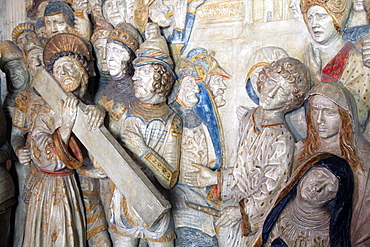
Plaster relief of Christ carrying the cross, Palais des Papes, UNESCO World Heritage Site, Avignon, Rhone Valley, Provence, France, Europe
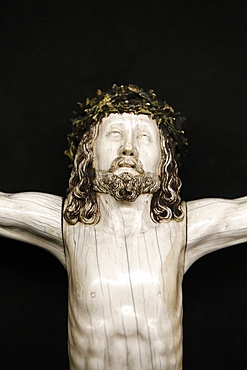
Detail of a Crucifixion sculpture in Notre-Dame de Paris cathedral Treasure Museum, Paris, France, Europe

Stained glass of Christ on the cross, in Saint-Pierre de Solesmes Abbey, Solesmes, Sarthe, Pays de la Loire, France, Europe

Main altar sculpture dating from 1980, of Jesus taken down from the cross, by Claude Gruer, Saint-Samson cathedral, Dol-de-Bretagne, Ille-et-Vilaine, Brittany, France, Europe
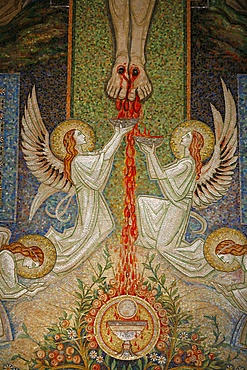
Detail of the mosaic by Antoine Molkenboer showing the Blood of Christ, Annecy, Haute Savoie, France, Europe
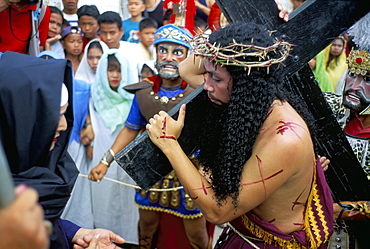
Christ of Calvary in Easter procession, Morionnes, island of Marinduque, Philippines, Southeast Asia, Asia

Christ of Calvary in Easter procession, Morionnes, island of Marinduque, Philippines, Southeast Asia, Asia

Crucifixion, Christian frescoes in Sandal Church, Goreme Open Air Museum, Goreme, Cappadocia, Anatolia, Turkey, Asia Minor, Eurasia

Detail of the Crucifixion by Andrea di Bartolo, painted in 1495, of two Roman soldiers gambling the Christ's tunic by throwing dice, Paris, France, Europe

The 12th century fresco of Christ's triumph on the cross in San Clemente basilica, Rome, Lazio, Italy, Europe
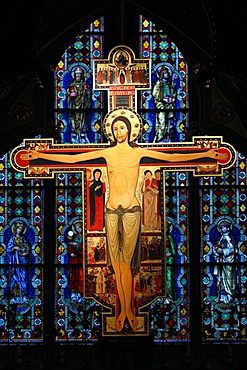
Jesus on the Cross, a copy of an Italian original from 1138, Heiligenkreuz Abbey, Lower Austria, Austria, Europe
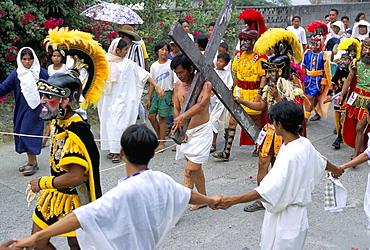
Christ of Calvary in Easter procession, Morionnes, island of Marinduque, Philippines, Southeast Asia, Asia
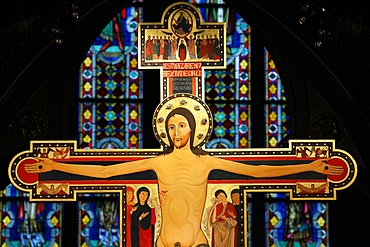
Jesus on the Cross, a copy of an Italian original from 1138, Heiligenkreuz Abbey, Lower Austria, Austria, Europe

Christ vanquishing Evil, symbolised by snakes, Ty Mamm Doue chapel, Quimper, Finistere, Brittany, France, Europe
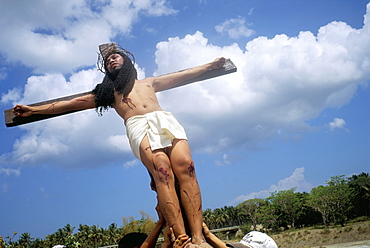
Crucifixion, Christ of Calvary, Easter procession, Morionnes, island of Marinduque, Philippines, Southeast Asia, Asia
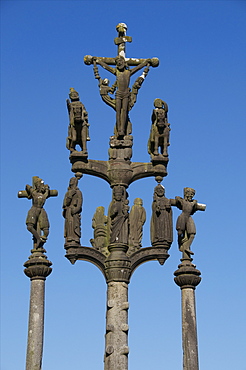
Calvary showing Christ on the cross flanked by two thieves, St. Thegonnec parish enclosure dating from 1610, Leon, Finistere, Brittany, France, Europe

Verges, a small town in the Northeast of Catalonia (Spain), during Easter celebrates the Procession of Verges with skeletons dancing on the sound of a drum, Roman soldiers, known as the 'Manages', and a representation of the life and crucifixion of Jesus Christ. The Procession features the Dance of Death, a tradition from the Middle Age associated with epidemics and plagues and the only one remaining in Spain Ten skeletons dance to the beat of a drum to remember that no one is exempt of death. The backdrop of the medieval walls and towers of Verges is key to this macabre staging.
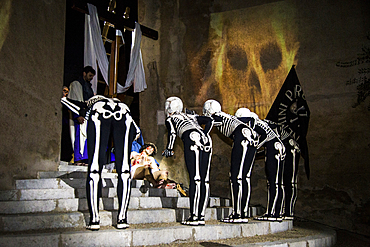
Verges, a small town in the Northeast of Catalonia (Spain), during Easter celebrates the Procession of Verges with skeletons dancing on the sound of a drum, Roman soldiers, known as the 'Manages', and a representation of the life and crucifixion of Jesus Christ. The Procession features the Dance of Death, a tradition from the Middle Age associated with epidemics and plagues and the only one remaining in Spain Ten skeletons dance to the beat of a drum to remember that no one is exempt of death. The backdrop of the medieval walls and towers of Verges is key to this macabre staging.

Verges, a small town in the Northeast of Catalonia (Spain), during Easter celebrates the Procession of Verges with skeletons dancing on the sound of a drum, Roman soldiers, known as the 'Manages', and a representation of the life and crucifixion of Jesus Christ. The Procession features the Dance of Death, a tradition from the Middle Age associated with epidemics and plagues and the only one remaining in Spain Ten skeletons dance to the beat of a drum to remember that no one is exempt of death. The backdrop of the medieval walls and towers of Verges is key to this macabre staging.
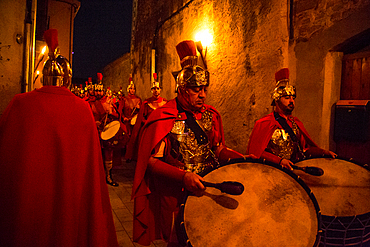
Verges, a small town in the Northeast of Catalonia (Spain), during Easter celebrates the Procession of Verges with skeletons dancing on the sound of a drum, Roman soldiers, known as the 'Manages', and a representation of the life and crucifixion of Jesus Christ. The Procession features the Dance of Death, a tradition from the Middle Age associated with epidemics and plagues and the only one remaining in Spain Ten skeletons dance to the beat of a drum to remember that no one is exempt of death. The backdrop of the medieval walls and towers of Verges is key to this macabre staging.

Verges, a small town in the Northeast of Catalonia (Spain), during Easter celebrates the Procession of Verges with skeletons dancing on the sound of a drum, Roman soldiers, known as the 'Manages', and a representation of the life and crucifixion of Jesus Christ. The Procession features the Dance of Death, a tradition from the Middle Age associated with epidemics and plagues and the only one remaining in Spain Ten skeletons dance to the beat of a drum to remember that no one is exempt of death. The backdrop of the medieval walls and towers of Verges is key to this macabre staging.
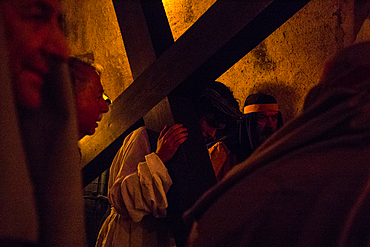
Verges, a small town in the Northeast of Catalonia (Spain), during Easter celebrates the Procession of Verges with skeletons dancing on the sound of a drum, Roman soldiers, known as the 'Manages', and a representation of the life and crucifixion of Jesus Christ. The Procession features the Dance of Death, a tradition from the Middle Age associated with epidemics and plagues and the only one remaining in Spain Ten skeletons dance to the beat of a drum to remember that no one is exempt of death. The backdrop of the medieval walls and towers of Verges is key to this macabre staging.
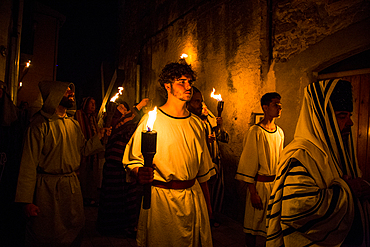
Verges, a small town in the Northeast of Catalonia (Spain), during Easter celebrates the Procession of Verges with skeletons dancing on the sound of a drum, Roman soldiers, known as the 'Manages', and a representation of the life and crucifixion of Jesus Christ. The Procession features the Dance of Death, a tradition from the Middle Age associated with epidemics and plagues and the only one remaining in Spain Ten skeletons dance to the beat of a drum to remember that no one is exempt of death. The backdrop of the medieval walls and towers of Verges is key to this macabre staging.
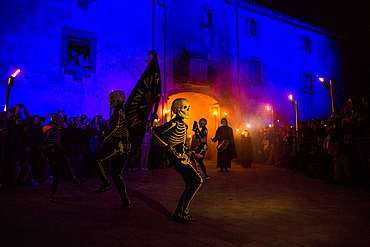
Verges, a small town in the Northeast of Catalonia (Spain), during Easter celebrates the Procession of Verges with skeletons dancing on the sound of a drum, Roman soldiers, known as the 'Manages', and a representation of the life and crucifixion of Jesus Christ. The Procession features the Dance of Death, a tradition from the Middle Age associated with epidemics and plagues and the only one remaining in Spain Ten skeletons dance to the beat of a drum to remember that no one is exempt of death. The backdrop of the medieval walls and towers of Verges is key to this macabre staging.
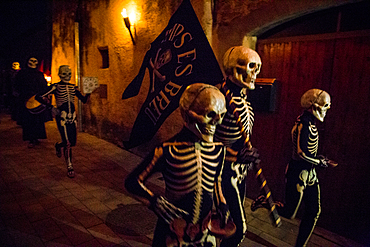
Verges, a small town in the Northeast of Catalonia (Spain), during Easter celebrates the Procession of Verges with skeletons dancing on the sound of a drum, Roman soldiers, known as the 'Manages', and a representation of the life and crucifixion of Jesus Christ. The Procession features the Dance of Death, a tradition from the Middle Age associated with epidemics and plagues and the only one remaining in Spain Ten skeletons dance to the beat of a drum to remember that no one is exempt of death. The backdrop of the medieval walls and towers of Verges is key to this macabre staging.
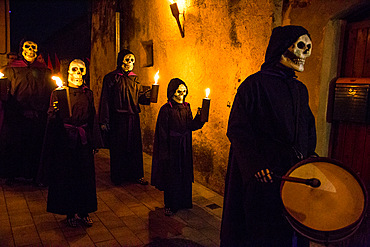
Verges, a small town in the Northeast of Catalonia (Spain), during Easter celebrates the Procession of Verges with skeletons dancing on the sound of a drum, Roman soldiers, known as the 'Manages', and a representation of the life and crucifixion of Jesus Christ. The Procession features the Dance of Death, a tradition from the Middle Age associated with epidemics and plagues and the only one remaining in Spain Ten skeletons dance to the beat of a drum to remember that no one is exempt of death. The backdrop of the medieval walls and towers of Verges is key to this macabre staging.
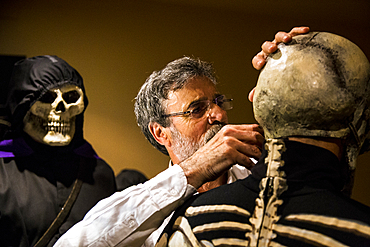
Verges, a small town in the Northeast of Catalonia (Spain), during Easter celebrates the Procession of Verges with skeletons dancing on the sound of a drum, Roman soldiers, known as the 'Manages', and a representation of the life and crucifixion of Jesus Christ. The Procession features the Dance of Death, a tradition from the Middle Age associated with epidemics and plagues and the only one remaining in Spain Ten skeletons dance to the beat of a drum to remember that no one is exempt of death. The backdrop of the medieval walls and towers of Verges is key to this macabre staging.
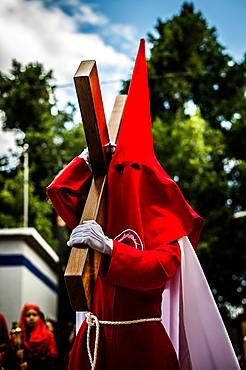
Among them there are also differences Nazarenes, some are barefoot and harder doing his penance, others bearing crosses, there are those who carry various representative elements of the brotherhood, musical objects, candles, etc,
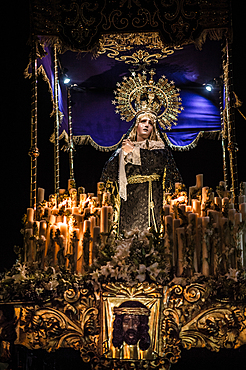
There are twenty three main platform, with the end of the procession marked by that dedicated to Our Lady of Solitude also called ,??La Dolorosa,?? because of the expression her face takes on upon seeing her dead Son, The statue is carried by around 40 men, carrying upon their shoulders a weight of over a ton,

For almost 60 years, about two thousand people from 28 different guilds (associations of faithful Catholics) come together on Good Friday to participate in this procession, carrying emblems, religious images concerning the Stations of the Cross, and dressed in the distinctive colors of their guilds, Each one of the ,??Guilds,?? carries an image with a picture of Jesus Christ,??s Stations of the Cross and of the mysteries of the Holy Rosary,
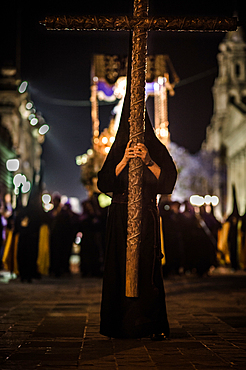
There are twenty three main platform, with the end of the procession marked by that dedicated to Our Lady of Solitude also called ,??La Dolorosa,?? because of the expression her face takes on upon seeing her dead Son, The statue is carried by around 40 men, carrying upon their shoulders a weight of over a ton,
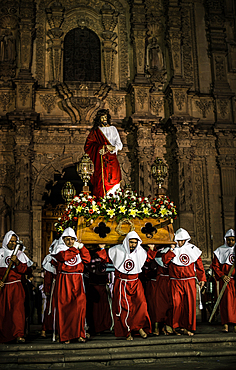
For almost 60 years, about two thousand people from 28 different guilds (associations of faithful Catholics) come together on Good Friday to participate in this procession, carrying emblems, religious images concerning the Stations of the Cross, and dressed in the distinctive colors of their guilds, Each one of the ,??Guilds,?? carries an image with a picture of Jesus Christ,??s Stations of the Cross and of the mysteries of the Holy Rosary,
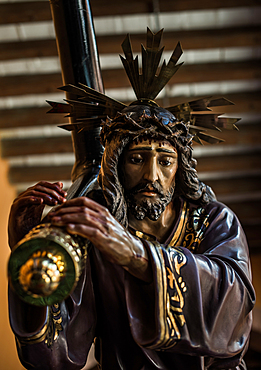
For almost 60 years, about two thousand people from 28 different guilds (associations of faithful Catholics) come together on Good Friday to participate in this procession, carrying emblems, religious images concerning the Stations of the Cross, and dressed in the distinctive colors of their guilds, Each one of the ,??Guilds,?? carries an image with a picture of Jesus Christ,??s Stations of the Cross and of the mysteries of the Holy Rosary,

